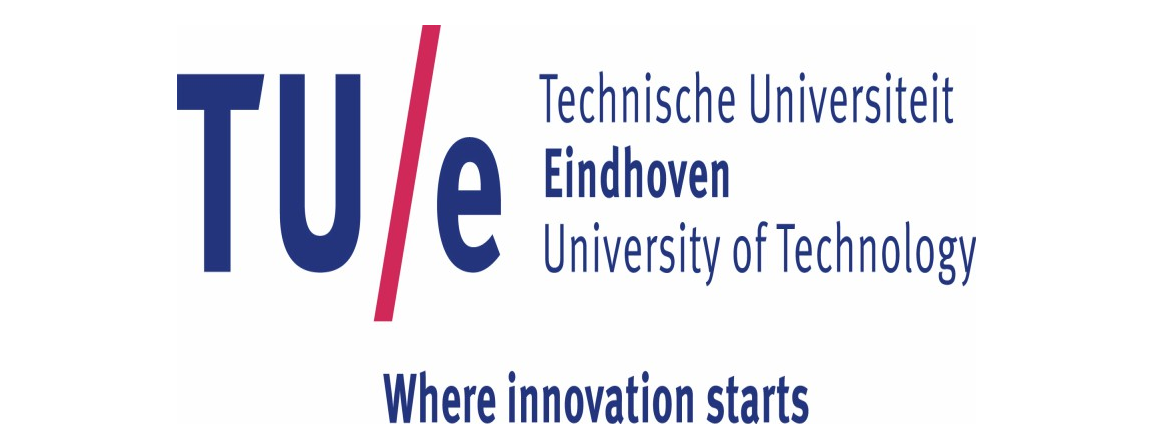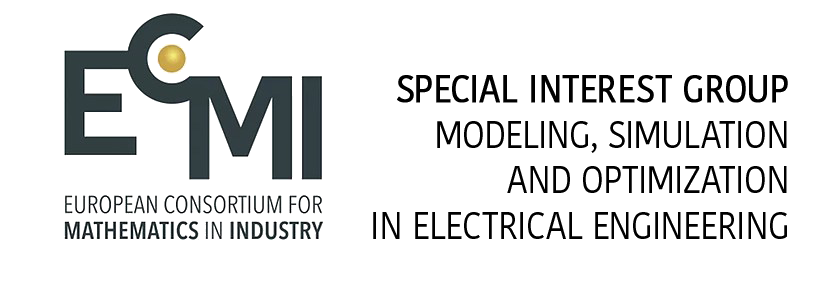Ursula van Rienen
University of Rostock - Germany
Some highlights from Computational Electromagnetics @ SCEE
This presentation will shed light on some selected highlights in Computational Electromagnetics as presented during the past 25 years of the SCEE conference series.
Michael Günther
University of Wuppertal - Germany
Port-Hamiltonian Systems: a useful approach in electrical engineering?
Port-Hamiltonian systems (PHS) are a powerful tool in modeling dynamical problems in nature and engineering. They allow for a physically sound description, enable an easy way of correctly coupling subsystems and give hints for a proper space and time discretization which preserve the physical properties at a discrete level. In this talk, we will discuss PHS descriptions for different instances of problems in electrical engineering, including electrical networks and field descriptions, and corresponding discretization and integration scheme.
Ricardo Riaza
Universidad Politécnica de Madrid - Spain
A projective-based formalism for symmetric modeling of electrical circuits
From the early days of circuit theory, the formulation of Ohm's law in an explicit form, either in terms of resistance (resp. impedance) or conductance (resp. admittance), entails a break of symmetry in the formulation of circuit models. In this talk we will survey a recent approach which keeps the intrintic symmetry of circuit theory throughout the whole modeling process. The approach is supported on a projective formalism and, in particular, on the systematic use of homogeneous coordinates. This framework applies to resistive and reactive devices of lumped circuits, both in the linear and in the nonlinear context, and also to problems displaying coupling effects and/or including controlled sources.
Idoia Cortes Garcia
Eindhoven University of Technology - The Netherlands / TU Darmstadt - Germany
Multphysical Modelling and Co-Simulation of Superconducting Magnets in Accelerator Circuits
High-field superconducting magnets are used at the Large Hadron Collider at CERN, especially to bend the trajectory of the particle beams and keep them on a circular path. These magnets can quench causing the stored magnetic energy to be dissipated as heat in the coils of the magnet. If the quench is not detected in time, then the coils can overheat and possibly get damaged. Therefore the magnets are equipped with protection devices. The simulation of a quench process, along with the detection and protection systems, requires a detailed description of all the physical phenomena that are involved. This includes e.g. the magnetic field inside the superconducting magnets, heat propagation and surrounding (control) circuitry. STEAM (Simulation of Transient Effects in Accelerator Magnets) is a framework that allows the simulation of this quench protection system. This talk deals with the approach that is taken within STEAM, based on co-simulation techniques to tackle the multiphysical, multiscale and multirate problem that arises.
Carolina Urzúa Torres
TU Delft - The Netherlands
Boundary element methods for electromagnetic scattering at complex geometries
Boundary element methods (BEM) have become a popular approach to numerically simulate the electromagnetic scattering at thin structures like patch antennas. In practice, the thickness of these structures is negligible with respect to their other dimensions. For this reason, they are modeled as ”open surfaces” in 3D. This approximation naturally captures the extreme proximity of the two sides of the scatterer and thus the physical behavior of the scattered field. However, the mathematical framework and numerical properties of the electric field integral equation change when considering (simple) open surfaces, and becomes even more challenging when taking into account geometrical configurations that may involve panels with junctions. In this talk, I will present recent developments in BEM that improve the numerical treatment of these types of complex geometries. The validity and usefulness of the proposed approaches will be illustrated with numerical experiments.
Fernando José Henriquez Barraza
EPFL - Switzerland
ReLU Neural Network Galerkin Boundary Element Method
We introduce a Neural Network (NN for short) approximation architecture for the numerical solution of Boundary Integral Equations (BIEs). We adopt a Galerkin formulation with 1st kind BIEs on polygonal domains with a finite number of straight sides. Trial spaces used in the Galerkin discretization of the BIEs are built by using NNs that, in turn, employ the so-called Rectified Linear Units (ReLU). The ReLU-NNs used to approximate the solutions to the BIEs depend nonlinearly on the parameters characterizing the NNs themselves. The computation of a numerical solution to a BIE by means of ReLU-NNs boils down to a fine tuning of these parameters, in a process called network training. We argue that by using ReLU-NNs with various combinations of width and depth as Galerkin trial spaces, one essentially recovers well-known approximation results for the standard Galerkin Boundary Element Method. We propose to employ well-known a posteriori error estimators to build local and efficiently computable loss functions to train the ReLU-NNs for the numerical approximation of BIEs. Exploratory numerical experiments validate our theoretical findings and indicate the viability of the proposed ReLU-NN Galerkin BEM approach.
Invited Speakers for the Industry Day
Andras Poppe
SIEMENS Industry Software STS Strategic Innovation group, Hungary
Budapest University of Technology and Economics (BME), Department of Electron Devices, Hungary
Creating new multi-domain digital twins of LEDs with an attempt to describe their ageing for predictive maintenace schemes
LEDification has changed the modern lighting industry greatly. Part of this transformation is taking over practices from the electronics industry, such setting up efficient simulation models on component, module and system level. It is widely known, that LEDs’ operation is strongly affected by the temperature, having a direct effect on their efficiency and expected lifetime/reliability. Therefore, so called multi-domain simulation models are needed that describe the mutual dependence of LED operation in the electrical, thermal and optical domains. The recently finished European project Delphi4LED (www.delphi4LED.org) proposed multi-domain models of LED packages that in a SPICE-like simulation environment allow creating system level simulation of complete LED luminaires. This kind of virtual prototyping of LED based lighting solutions speeds up the luminaire design and development process and significantly reduces the associated costs. The recently launch new European R&D project AI-TWILIGHT (ai-twilight.eu), as a follow up action, aims to achieve that the Delphi4LED become industrial reality. This requires, among others, that these LED models – LED digital twins as used in an Industry 4.0 context – should become widely accessible; LED vendors should be able to easily generate them as a kind of an e-datasheet to replace the classical paper based ones. On the other hand, the AI-TWILIGHT project also aims to extend these LED digital twins with the description of LED ageing during field operation in order to be able to predict e.g. the remaining useful lifetime of an LED luminaire. In order to replace the expensive and lengthy classical lifetime testing methods of LEDs the project aims to use artificial intelligence (AI) techniques using much shorter and partial series of data, even from field tests, for LED lifetime prediction. The talk will introduce the process of creating multi-domain digital twins of LED luminaires and the way how the “executable” versions of these twins – “xDT”-s in short – may support the operation of safety critical and/or large lighting infrastructures.
Liesbeth Vanherpe
ASML, Eindhoven, The Netherlands
Scientific computing at ASML
In a world in which major breakthroughs measure only a few nanometers in size, the constant quest is to produce chips that are smaller, faster, more effective and less expensive. One of the major high-tech players leading the quest is ASML, a manufacturer of lithography systems for producing computer chips. You might think of ASML as a hardware company, but we actually have a large software and computing community. In this talk, I take your through ASML's organization and give you an idea of the extreme engineering that is taking place. I highlight how scientific computing and software technology are an integral part of our success and help to improve our systems, one nanometer at a time.








